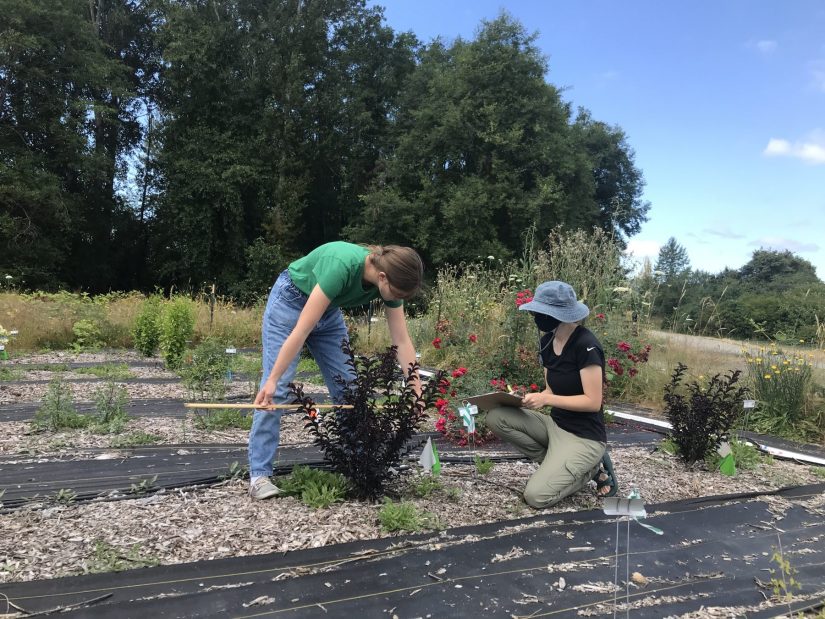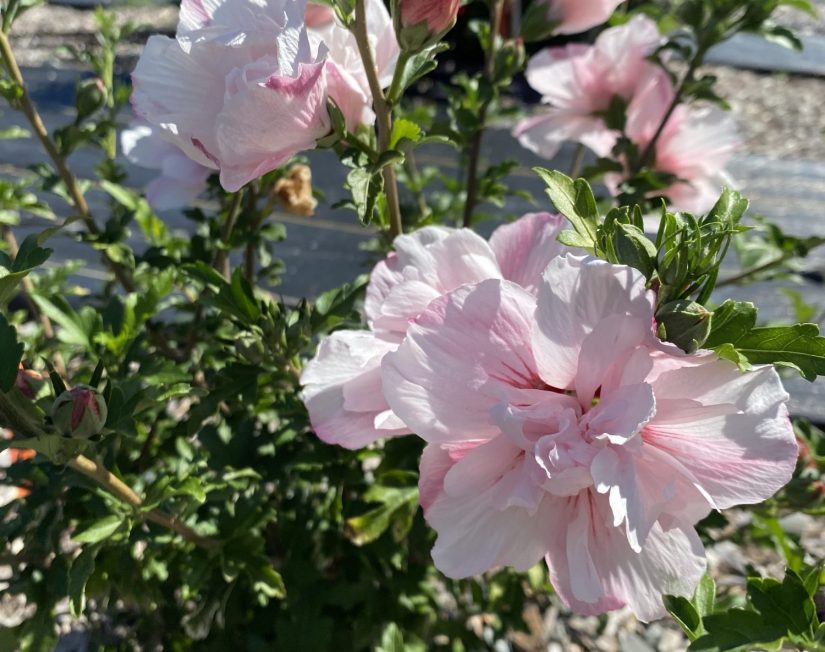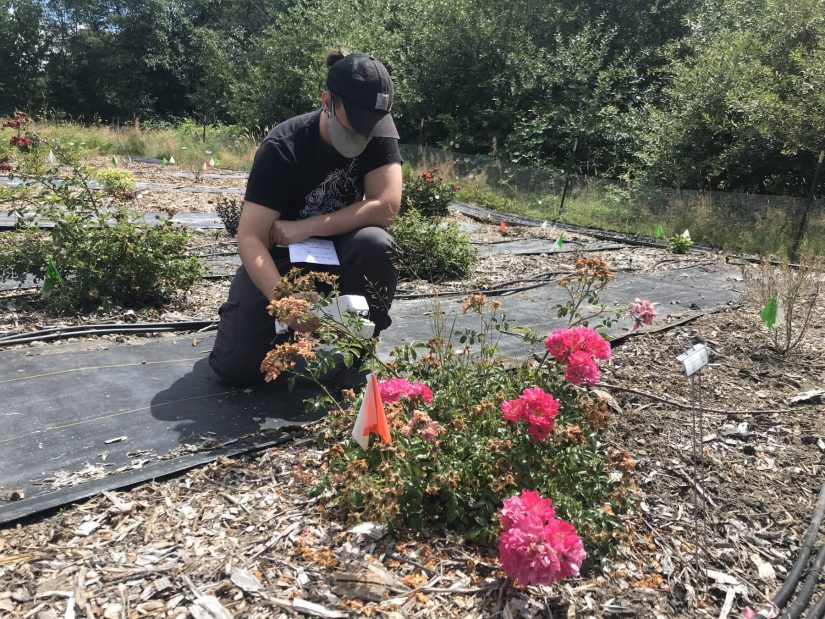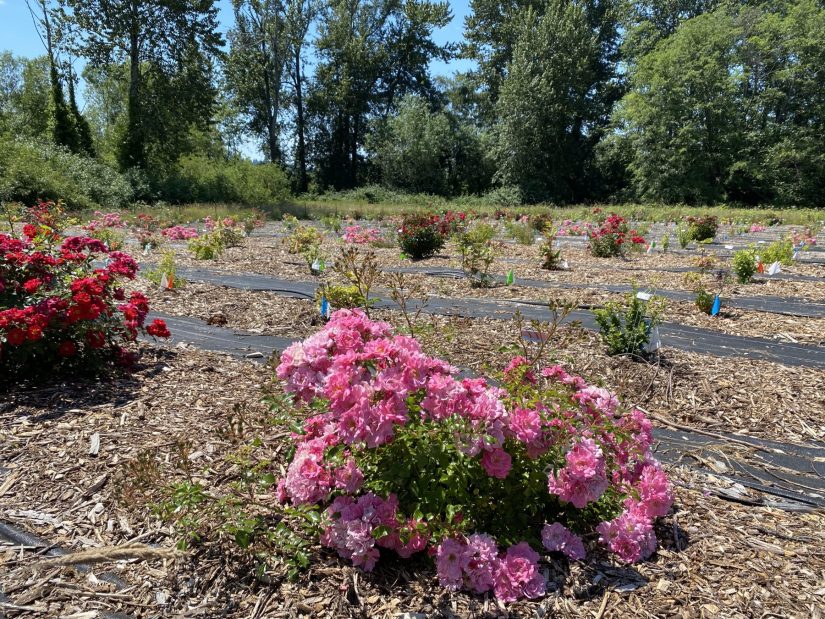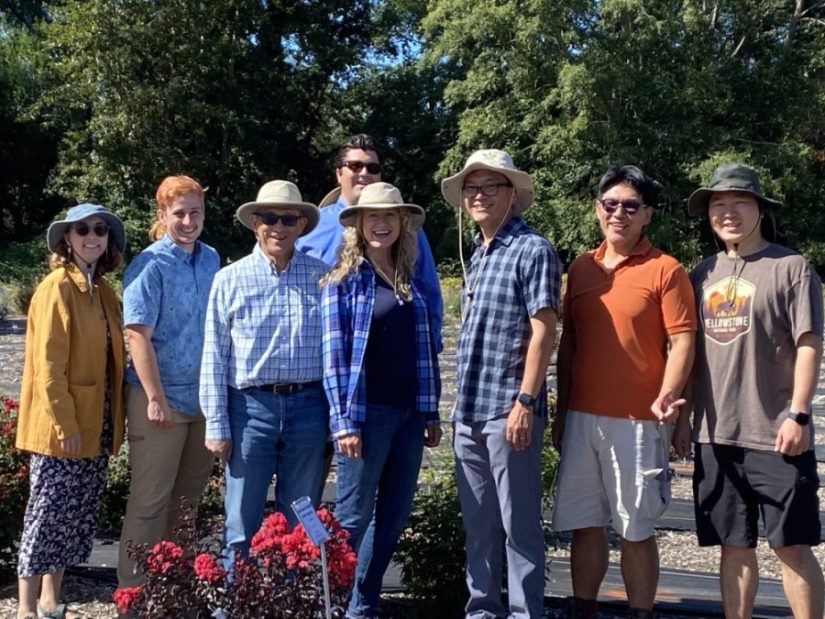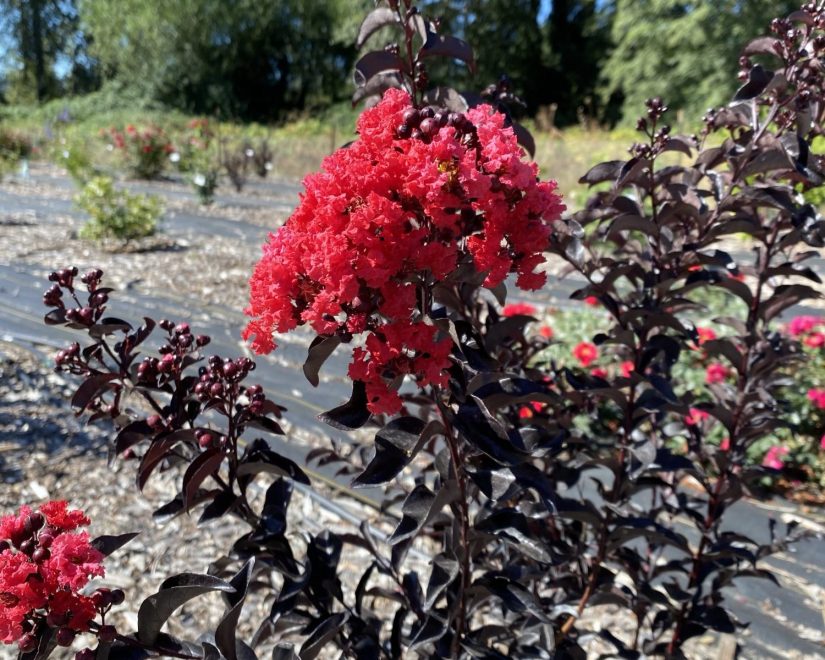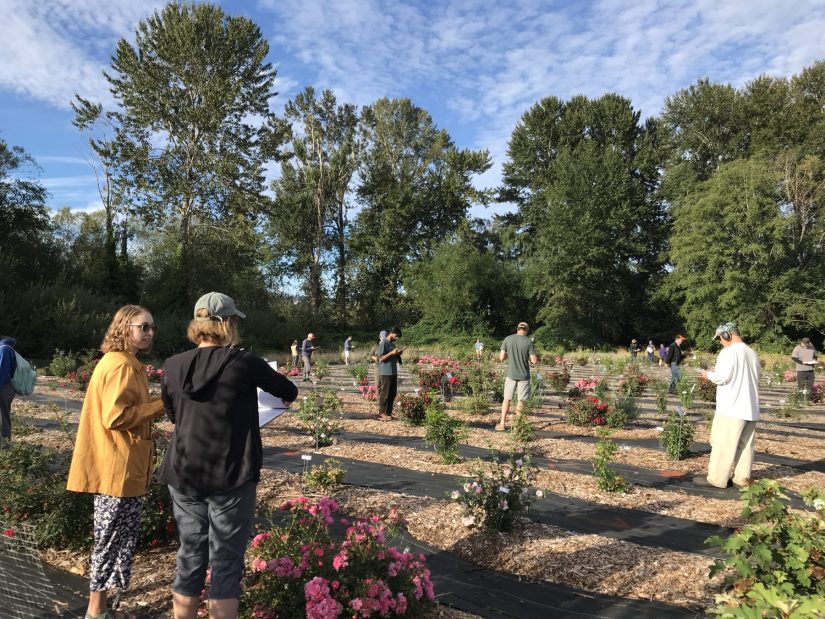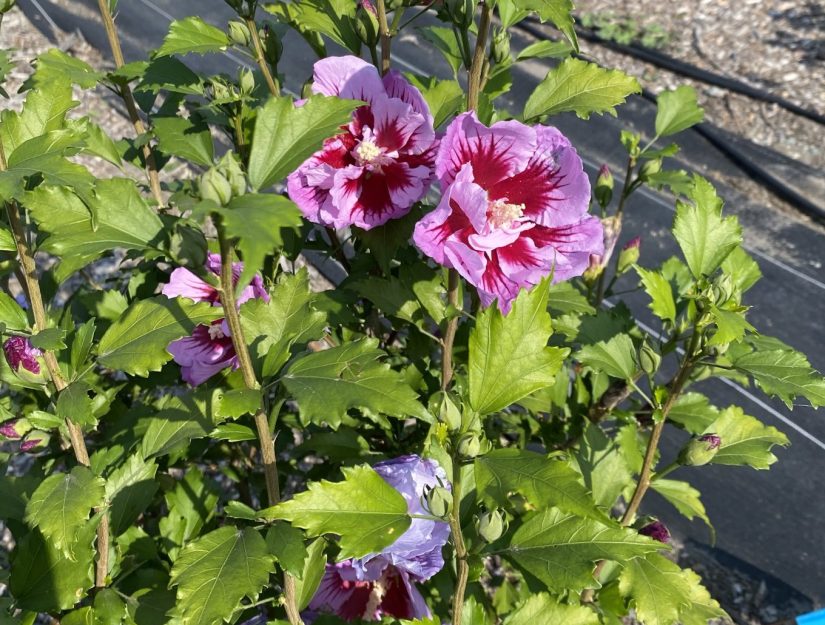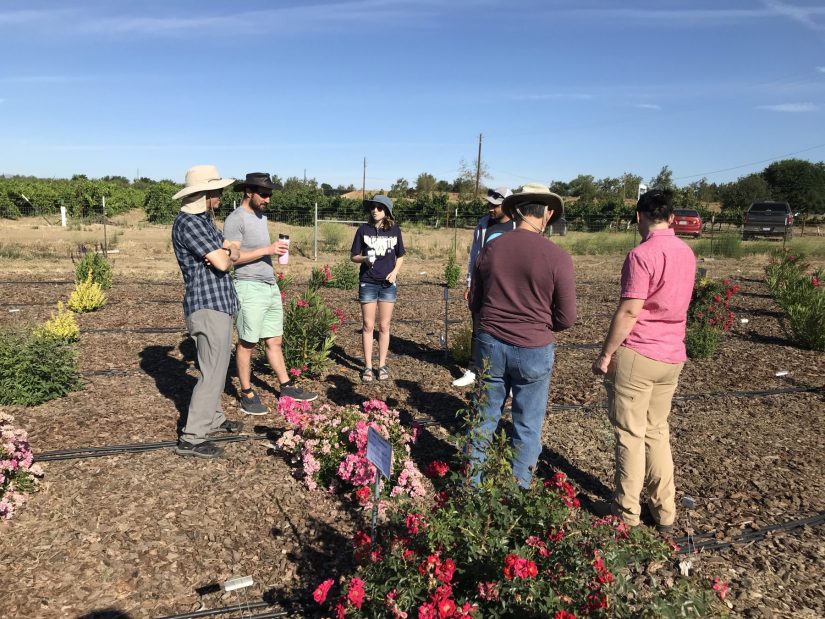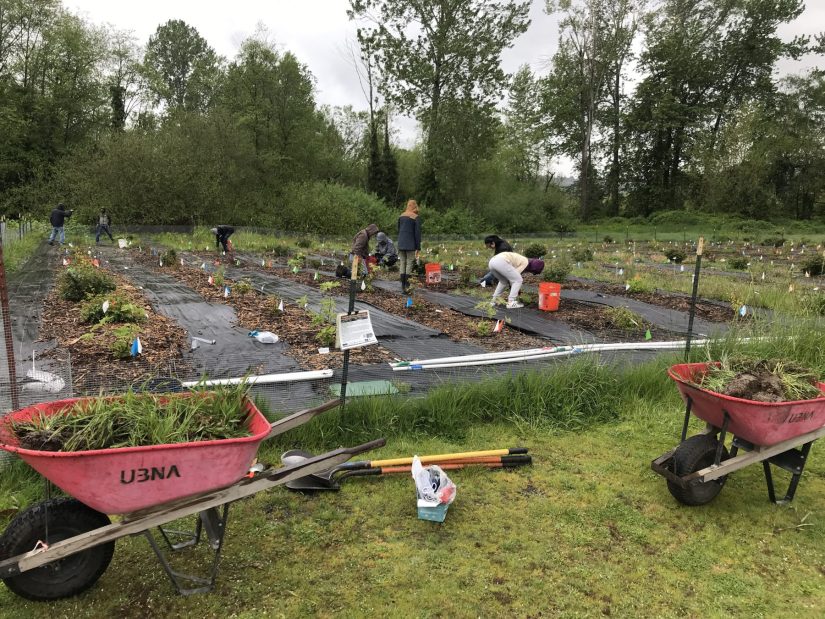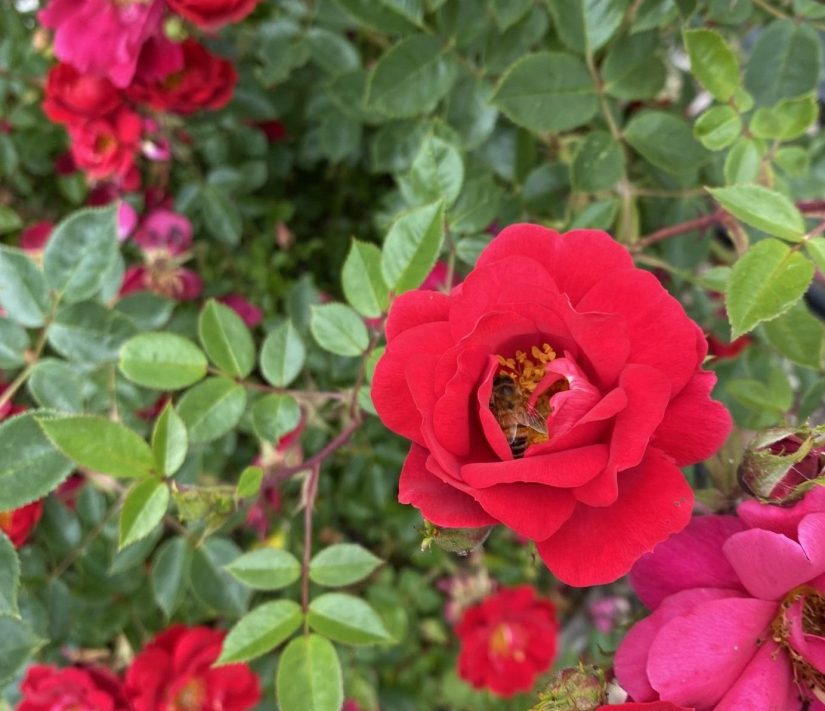Climate-Ready Landscape Plants Project
Originally starting as the University of California Landscape Irrigation Trials (UCLPIT), this project expanded to field sites across the Western U.S. The goal of this project was to create a non-biased plant trials network that evaluated landscape plant performance under different irrigation regimes and promote the production and utilization of low water-use plants to the horticultural industry and the public. Researchers on the project conducted outreach in the form of field days, presentations at workshops and conferences, publications in scientific journals and trade magazines, and social media to share the information with industry stakeholders and the general public. This project is conducted at 6 different field sites: the University of Washington, the University of California-Davis, South Coast Research and Extension Center, the University of Arizona, Utah State University, and Oregon State University North Willamette Research and Extension Center.
Experimental Setup
Between each site, 40+ different taxa were tested with 6 taxa common to each site. Within a site, 15 different taxa were tested with 24 replicates per taxa (8 plants per irrigation treatment) for a total of 360 plants in one plot. The trial lasts two years, one year of establishment where all the plants are watered the same amount, and year two when the irrigation treatments start. There are three different irrigation treatments, 80%, 50%, or 20% evapotranspiration (ETo) based on the Water Use Classification of Landscape Plants (WUCOLS). Each plant was randomly assigned a position in the plot and one of the three irrigation treatments. They were planted 2m away in each direction from their neighbor with their own irrigation drip ring so that the specific treatment was delivered to that particular plant. See below for more information on the irrigation setup.
Throughout the field season (June-September), monthly growth measurements and aesthetic ratings were recorded for each plant. These include length, width, height, foliage quality, flowering, disease resistance, pest tolerance, vigor, and overall appearance. Flowering and overall appearance ratings were assessed again two weeks after the initial monthly ratings to capture floral bloom times. Pictures of a representative plant per treatment per taxa were taken monthly to document growth and overall health over the field season. An open house was held at the end of the field season where landscape and horticultural professionals were tasked with evaluating the aesthetic qualities of a subset of the plants. In addition to measuring aesthetic ratings and growth, a certain subset of taxa was used to test physiological questions. More information on the physiological measurements can be found on the Physiology Page. This experimental setup was duplicated for plot two for the 2023 field season but with a different set of taxa.
Irrigation System Mechanics
Irrigation treatments were based on WUCOLS standards for high, medium, and low water use (80%, 50%, and 20% ETo). Evapotranspiration includes water evaporated from the soil and transpiration, which is water loss through plant leaves. Daily ETo and precipitation were recorded from the Washington Ag WeatherNet website because they have a weather station right next to the plots. These parameters, in combination with soil texture and soil water holding capacity, determined when the treatments needed to be watered. Tubing ran down each row of the plot, one tube per treatment, and was hooked up to one main pipe with an irrigation timer. Throughout the field season, the frequency of irrigation differed, but the volume of water applied to each plant in that irrigation event remained the same.
Field Seasons
2022 Irrigation Deficit Trial
15 taxa were evaluated during the 2022 irrigation deficit trial. Info on individual taxa is below, and the report from the 2022 field season can be accessed here: CRLP 2022 University of Washington report
Taxa Evaluated 2022
Ceanothus ‘Victoria’
Ceanothus ‘Victoria’ is also known as ‘California lilac’. It is a woody shrub that likes full sun and is considered drought-tolerant. It has small purple blooms that bees love. You can learn more about this plant here.
Hibiscus Pink Chiffon
Hibiscus Pink Chiffon is also known as ‘Rose of Sharon’. When flowering this plant has densely packed, light pink double blooms. You can learn more about this plant here.
Hibiscus Purple Pillar
Hibiscus Purple Pillar is also known as ‘Rose of Sharon’. This plant has a columnar shape and can grow up to 10-15 feet tall with beautiful purple blooms. You can learn more about this plant here.
Hibiscus syriacus ‘ORSTHIB5X1’ PPAF
This is a new cultivar of Hibiscus created and grown by Ryan Contreras at Oregon State University.
Hydrangea quercifolia ‘Pee Wee’
Hydrangea quercifolia ‘Pee Wee’ is also known as Pee Wee Oakleaf Hydrangea. This plant has cone-like white flower blooms and beautiful fall foliage. It is a smaller deciduous shrub that has moderate water usage. You can learn more about this plant here.
Lagerstroemia Center Stage Red
Lagerstroemia Center Stage Red is also known as Crapemyrtle. This plant has striking red flowers with a yellow center against black leaves. You can learn more about this plant here.
Mahonia aquifolium
Mahonia aquifolium is also known as Oregon Grape. This plant is the only native plant to Washington in the 2022 trial. It has holly-shaped leaves and produces colorful berries. You can learn more about this plant here.
Osmanthus ‘Variegatus’
Osmanthus ‘Variegatus’ is also known as holly osmanthus. This is a variegated plant with dark and light green leaves and is considered a low-maintenance plant. You can learn more about this plant here.
Philadelphus lewisii ‘Blizzard’
Philadelphus lewisii ‘Blizzard’ is also known as Mock Orange. It is an upright shrub that has clusters of sweet-smelling white flowers. You can learn more about this plant here.
Philadelphus
This is a new cultivar of Philadelphus not yet on the market grown by Ryan Contreras at Oregon State University.
Rosa Oso Easy Double Pink
Rosa Oso Easy Double Pink is a smaller groundcover rosebush. It has pretty, light pink flowers that bloom all summer. You can learn more about this plant here.
Rosa Oso Easy Urban Legend
Rosa Oso Easy Urban Legend is a larger rosebush that can get 2-3 feet wide and tall. It has red to hot pink flowers and blooms throughout the summer. You can learn more about this plant here.
Rosa Petite Knockout
Rosa Petite Knockout was bred to be a compact rosebush with smaller flowers. This rose blooms throughout the summer and has dark red/pink flowers. You can learn more about this plant here.
Rosmarinus ‘Arp’
Rosmarinus ‘Arp’ is also known commonly as rosemary. It has very fragrant needles and delicate light blue/purple flowers. You can learn more about this plant here.
Vitex Blue Diddley
Vitex Blue Diddley is also known as Chastetree. It is a woody shrub that has blue/purple cone flowers. You can learn more about this plant here.
Results from 2022 UW open house
Favorite Taxa: Lagerstroemia Center Stage Red and Vitex Blue Diddley
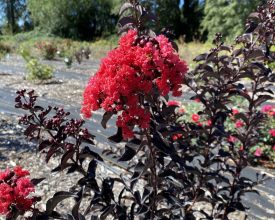
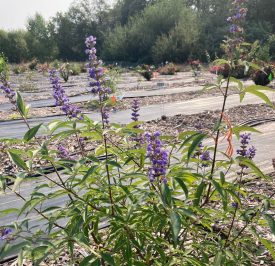
We had 42 participants in our open house of varying backgrounds in the horticultural field from gardeners and landscape architects to researchers and public agency workers.
2023 Irrigation Deficit Trial
12 taxa were evaluated during the 2022 irrigation deficit trial. Info on individual taxa is below, and you can access the report from the 2023 field season can be accessed here: 2023 University of Washington Report.
Taxa evaluated 2023
Azalea Lights Series Red
Azalea Lights Series Red is a round, deciduous shrub. It has vibrant red flowers in the summer. You can learn more about this plant here.
Azalea Encore Autumn Lily
Azalea Encore Autumn Lily has striking white flowers and evergreen foliage. You can learn more about this plant here.
Buxus Little Missy
Buxus Little Missy is a boxwood with small, rounded leaves. It has densely packed, dark green foliage. You can learn more about this plant here.
Cercis canadensis
Cercis canadensis also known as the Eastern Redbud is a tree with beautiful pink flowers in the spring. It is native to North America. You can learn more about this plant here.
Cercis occidentalis
Cercis occidentalis also known as the Western Redbud is a tree with heart-shaped leaves. It is native to North America. You can learn more about this plant here.
Cotoneaster Emerald Beauty
Cotoneaster Emerald Beauty is a small, dense bush with dark glossy leaves, and produces small flowers followed by striking orange berries. You can learn more about this plant here.
Hesperaloe Straight Up Red
Hesperaloe Straight Up Red is also known as Straight Up Red Texas Yucca. It has red-pink upright flowers and unique grey-green foliage. You can learn more about this plant here.
Miscanthus sinensis Bandwidth
Miscanthus sinensis Bandwidth is also known as bandwidth Maidenhair Grass. It is a dwarf grass with variegated vegetation, alternating green and yellow. You can learn more about this plant here.
Physocarpus Diablo Ninebark
Physocarpus Diablo Ninebark is a shrub with dark purple foliage and white flower clusters. You can learn more about this plant here.
Physocarpus opulifolius Little Devil
Physocarpus opulifolius Little Devil is also known as Little Devil Common Ninebark. Little Devil is a dwarf cultivar of Diabolo. It has a compact shape with dark red foliage and white flower clusters. You can learn more about this plant here.
Rosa Blushing Drift
Rosa Blushing Drift is a compact rosebush with doubled, light pink flower clusters. You can learn more about this plant here.
Vitex Summertime Blues
Vitex Summertime Blues is a dense shrub with lavender-colored flower spikes. You can learn more about this plant here.
Climate-Ready Vines Project
This project is a continuation of the Climate-Ready Landscape Plants Project which includes different irrigation regimes but also investigates the shading and cooling effects of vines. There will be 15+ taxa tested with five taxa common to all sites. This project will be conducted at five different field sites: the University of Washington, the University of California-Davis, South Coast Research and Extension Center, the University of Arizona, and Utah State University. Plot setup for this project is in progress with full installation of trellises and plants by summer 2023 with two seasons of deficit treatments in 2024 and 2025. Like the Climate-Ready Landscape Plants Project, plants will be rated on appearance qualities and growth. The plants will also be assessed on percent coverage of the trellis, and temperature through thermal imaging to access cooling potential.
Follow us on Instagram!
Want to get involved?
Climate Ready Landscape Plants is looking for volunteers to help with plot maintenance, upkeep and establishment. Please navigate to the UWBG Volunteer Website and submit an application to be a Climate Ready Landscape Plants Volunteer!

